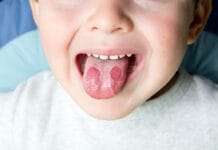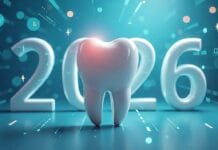Whether it be in the clinical setting, or at home, we all need to streamline our resources to help us work smarter, not harder. These dental hacks may be just the tip needed to smooth some of the wrinkles out of a busy day. I would like to share some of my dental hacks which have helped me over the years. I hope you will leave some of your own “hacks” in the comments section so we can learn from each other!
Loupes with lighting! Wow! What a time-saver and life-saver.
Saddle chairs have my vote.
ASTM level 3 masks keeps you safer.
Protect your eyes. Regular glasses do not offer enough protection. Safety is a must.
Have patients pre-rinse prior to treatment lessens bacterial aerosols and cross-contamination.
Polish prior to hand-scaling to remove excess biofilm. This makes scaling easier and aids in visibility.
Polishing prior to ultrasonic cavitation or piezo usage reduces bacterial aerosols and cross contamination.
Have patients post-rinse to aid in healing after treatment. If you have done a pre-polish, this can make the patient feel fresher at the end of their appointment (resist the urge to polish twice).
Polish, ultrasonic/piezo, hand scale – This order of instrumentation is a great time-saver.
Cetacaine. Dry tissue, spray Cetacaine on the area to be numb, drive into tissue with air, anesthetize. The patient will barely even know you are anesthetizing!
Raise the patient chair when taking radiographs. This will save your back and give you a better working angle.
Ask the patient to lift chin, lower chin, turn towards or away from you for better ergonomics and better care.
Relaxation music really does work!
Do an initial wipe-down of the dental unit while waiting for an examination if the doctor is running late. This can speed up the wipe, discard, wipe process.
Inform the front desk of treatment recommendations prior to patient check-out, so they will have the treatment plan ready when the patient leaves operatory.
Inform the front desk in the morning huddle if a patient needs a complete health history update or needs premedication.
Shake the patient’s hand in the waiting room to build a good rapport.
Inform in the morning meeting if/when assistance is needed for periodontal charting.
Co-diagnose to aid in treatment planning acceptance.
Have intra-oral photos up on the monitor for the patient to see and to alert the doctor of concerns.
Send intra-oral photos of concerns home with the patient in a folder.
Know when to refer for periodontal treatment.
Share any impending red flags or concerns with all staff members at the beginning of the day.
Be positive, it will reflect on patients and co-workers!
Help others in the office, and they will reciprocate!
Ask patients for a review if you know their dental appointment rocked!
Recommend dry brushing to a patient’s homecare routine prior to adding toothpaste. This can greatly reduce bacterial biofilm and deposits especially in the mandibular lingual.
Save yourself. The patient is responsible for his/her oral condition.
Patient education with patient permission is more important than removing every minuscule spicule of deposit. With the proper education, the patient may learn what options work best for him/her and have healthier check-ups in the future.
Xylitol recommendations really are appreciated! Great for dry mouth & plaque reduction.
Xylitol/saline nasal spray works wonders for sinus issues and nasal blockage.
Silver Diamine Fluoride – arrests caries in posterior teeth. Great for young children, elderly patients with rampant dry-mouth caries, or financially strapped patients. Caution: follow directions to avoid staining of tissue.
Use Motivational Interviewing to gain patient rapport and confidence.
Gather critical information in the first 15 minutes. This aids in co-diagnosing with the doctor.
Ask permission. Permission to floss, permission to give oral hygiene suggestions, permission to show and tell. If a patient says NO, then continue with the appointment and save your breath. They may simply need their own space.
Listen to co-workers. They may have good advice for you!
Remember, a prophy is not a periodontal treatment! Stop giving services away for free.
Review patient charts the day before.
Fluoride varnish! Both children and adults benefit.
Do NOT let Insurance coverage dictate necessary treatment. Listen to your gut instinct.
Hand your patient a sheet of recommendations for optimal oral health. Circle a few of them that you think might work best for them, and have them choose two or three to consider applying to their daily routine. Type it yourself, and personalize it.
Baking soda. Neutralizes oral pH and is a good recommendation if a patient cannot afford products.
*Print copies of below recipe for patients who you feel will appreciate a natural toothpaste.
Recipe for Homemade toothpaste
- Melt: ½ C coconut oil
- Add: 3 T baking soda
- Add: 1 T xylitol crystalline (Real Birch xylitol)
- Add: 10 drops+/- peppermint or cinnamon essential oil
- Stir well
- Store in small glass Mason jar with lid
- ~Enjoy your fresh mouth!~
Lastly…
Vacation and take time for yourself; it refreshes the soul.












